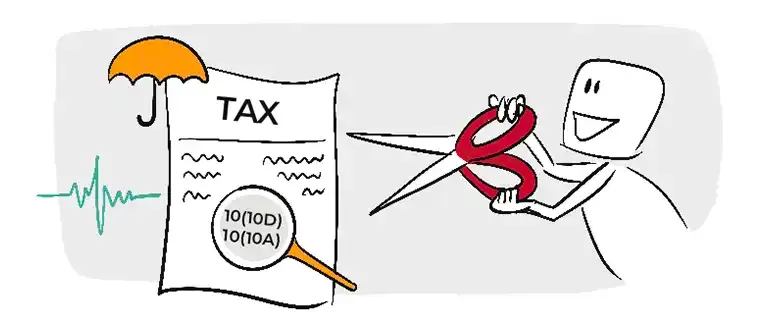
Ch. 9: Tax Benefits - Section 10(10D) + Section 10(10A)

- Key takeaways from this chapter
| Type of Policy | Condition |
|---|---|
You hold the policy for at least two years | |
You surrender the policy after five years from the date of purchase | |
Endowment plan or a Money-back plan (Traditional policies) | You pay premiums regularly for initial two years |
| Date of Issue | Condition |
|---|---|
Before 31st March, 2003 | No condition |
Between 1st April, 2003 to 31st March, 2012 | The sum assured must be at least five times the annual premium amount |
On or After 1st April, 2012 | The sum assured must be at least 10 times the annual premium amount |
On or After 1st April, 2013 | The sum assured must be at least 6.67 times the annual premium amount, or You are a person with disabilities or suffer from any ailment as per Section 80U of the Income Tax Act. |
ABSLI DigiShield Plan
Life cover up to 100 years of age.
Joint Cover Option
Inbuilt Terminal Illness Benefit
Tax Benefit^
Return of Premium Option~
Life Cover
₹1 crorePremium:
₹575/month 1¹Scenario for Female, Non Smoker, Age: 21 years, Plan Option: Level Cover, Premium paying Term: Regular pay, Policy Term: 25 years, Pay Frequency: Annual, Premiums are exclusive of GST. (Annual Premium of Rs. 6900/12 months(On Average Rs.575/month) (offline premium)
ABSLI DigiShield Plan (UIN: 109N108V13) is a non-linked non-participating individual pure risk premium life insurance plan; upon Policyholder’s selection of Plan Option 9 (Level Cover with Survival Benefit) and Plan Option 10 (Return of Premium [ROP]) this product shall be a non-linked non-participating individual life savings insurance plan. All terms & conditions are guaranteed throughout the Policy Term. GST and any other applicable taxes will be added (extra) to your premium and levied as per extant tax laws.
^Tax benefits are subject to changes in tax laws. Kindly consult your financial advisor for more details.
~Available only on regular pay
ADV/12/22-23/2552

Plan Smarter, Live Better!


